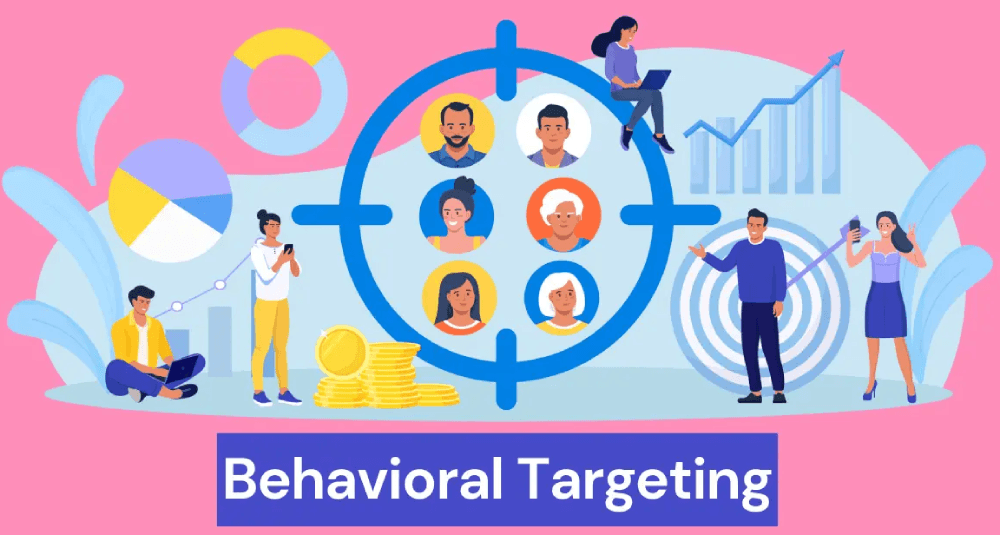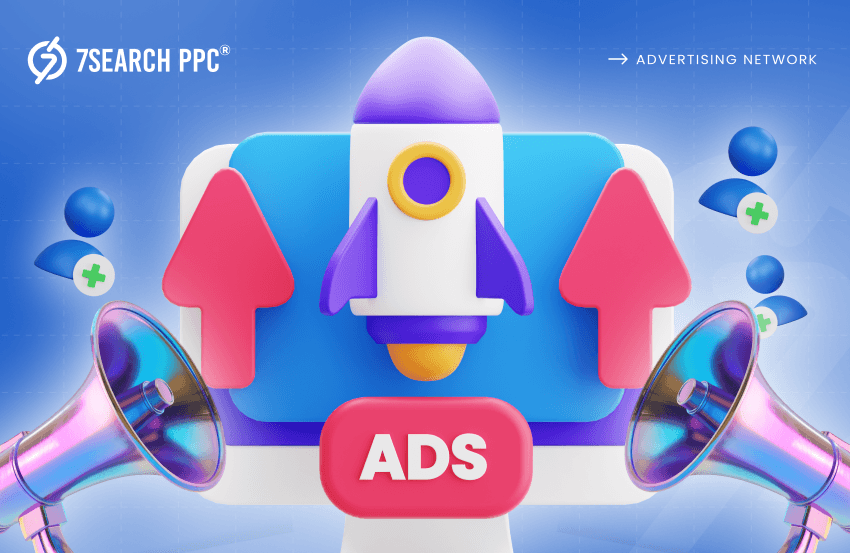Online ads are the primary weapon businesses use to showcase their offerings to the audience. Still, businesses are not satisfied with the results they get from them. They invest a large amount in digital advertising approaches, and in return, they often struggle to achieve the desired ROI.
We understand that this problem is big, so we started researching the root of this problem, and we found that businesses fail to show the right ads to the right audience at the right time. This is the biggest reason that businesses dump their ad budget on irrelevant audiences and do not get the desired outcomes.
We found this problem, and it’s our duty to provide you with a solution, too, right? Behavioral targeting— a smart tactic that delivers personalized ads based on user behavior and interests.
It works like an assistant for you that watches the online activity of the audience and shows your ads only to the most relevant audience for your business. There are many other crucial things to learn if you want to get mastery of this amazing targeting strategy.
In this blog, we will cover all the points that matter in revolutionizing your online advertising efforts.
Behavioral Targeting: Its Impact On Digital Advertising
We’ve been browsing travel blogs or visiting a particular travel website to search for a travel package. After that, while checking our social media feed, we saw an ad for a popular brand of travel bag we had never specifically searched for. No, this is not magic.
It’s a targeted advertising approach called behavioral targeting used by advertisers to display ads according to online activity. It helps advertisers spend the ad budget on the relevant audience by showing their ads to users who are more apt to be interested in their offerings based on their online behavior. It uses the information to target the potential audience, which includes;
- Audience’s search history
- Time spent on various websites
- Pages visited by the audience
- Audience interactions and clicks
Benefits Of Behavioral Targeting
Behavioral targeting offers various advantages for advertisers. Here are some of the key benefits;
- Relevancy- If you show relevant ads to the audience, it increases the chances of getting more engagement and profits. Behavioral advertising helps advertisers to do so. By understanding the online behavior of your audience, you can make your ads more relevant for certain individuals. This advertising approach permits you to show ads to people who are more likely to be interested, which can lead to high clicks and conversions.
- Saves Advertising Costs- The whole ad campaign depends on the advertising budget, and no advertiser wants to waste it on ineffective targeting strategies. Behavioral targeting helps advertisers control their ad budget wastage by filtering irrelevant audiences for their business. It ensures that your ads target only those audiences who are more likely to become your customers.
- Brand Recall- When people see ads that match their interests, they are more likely to recall your brand when they need relevant products or services. This creates a favorable image of the brand in their minds, which leads to stronger brand loyalty.
- Audience Insights- Behavioral advertising offers valuable insights into the audience, including user online behavior and habits. Advertisers can use this crucial data to make their digital advertising campaigns more effective.
- High Sales- Targeting users based on their online behavior not only improves their purchasing experiences but also increases the business’s sales. By analyzing user behavior, you can recommend products or services that the user is already interested in. Consistent advertising can easily convince them to make a purchase, which increases your business’s sales graph.
Challenges Of Behavioral Targeting
Online behavioral advertising offers various benefits, as discussed in the section above. However, it also comes with some drawbacks. Let’s explore them.
- Privacy Issues- The first challenge that might arise through online behavioral advertising is privacy issues. This is a major point of contention as audiences may feel like their online activities are being constantly monitored without their knowledge or consent, which can be invasive and cause feelings of exploitation.
- Data Security- The effectiveness of online advertising relies on user data. It involves collecting and storing large amounts of user data, which could be dangerous for consumers if not properly secured. Hackers might try to steal this information for malicious purposes.
- Ad Fatigue- If you constantly show the same ad to an audience, then they might get frustrated. Regularly seeing the same ads based on past browsing habits can be annoying. They might use tools like ad blockers to stop targeted ads, which directly impacts the effectiveness of advertising campaigns.
- Inaccuracy- Behavioral advertising is used to target users accurately, but sometimes, its targeting potential is questioned. It uses past actions to predict interests. However, people’s tastes and needs can change, and online activity may not reflect current desires.
- Ethical Considerations- There are concerns that behavioral advertising may result in discrimination by creating user profiles based on online browsing activity, which could lead to unfair targeting of certain demographics with ads.
Different Types Of Behavioral Targeting Techniques
There are two primary categories of online behavioral advertising techniques.

On Site Behavioral Targeting
This targeting method makes use of the data that is collected from the user’s activity on a particular website. For instance- A pharma website can track the products that a user views and subsequently display ads for those medical products on another page of the same website.
Network Behavioral Targeting
This targeting method involves using data that is collected from user’s online activity across a network of websites. Data brokers, which are companies that collect and sell consumer information, typically gather this data.
By using network behavioral advertising, marketers can display ads to users even after they have left their website. For instance- you spend a lot of time reading investment blogs. While browsing a news website, you see an ad for a life insurance plan. This is how online network behavioral advertising works.
Steps Of Behavioral Targeting
Online behavioral advertising involves four key steps that let you create targeted ads based on browsing habits and preferences.
Step 1: Data Collection
The process starts with the collection of data on the user’s online behaviors. This data can include website visits, browsing history, online activity, social media interactions, and even location information. You can use different tools to gather the user’s data and assist in this process, such as;
- Cookies
- Tracking Pixels
- Data Management Platforms (DMPs)
Step 2: User Segmentation
The next step after data collection is ‘User Segmentation’. All that collected data is then analyzed and used to create user profiles. Users are divided into various groups based on factors such as;
- Geographic Location
- Interests
- Purchase History
It permits advertisers to create targeted advertising that is more effective for specific groups of users.
Step 3: Ad Targeting and Delivery
After you have divided your users into various groups based on numerous factors, it’s time to implement your targeting strategy. The advertising platform you use will enable you to select the specific segments to which you want your ad to be displayed. These steps ensure that your advertisements reach the most relevant audience.
Step 4: Ad Personalization and Optimization
It’s not enough to just display the ad to the right people. You can make the advertisements more effective by personalizing them to better resonate with specific user segments.
This could mean customizing the ad content, imagery, or messaging to impress your targeted audience. It’s important to constantly monitor the results and keep optimizing the campaign to get better outcomes.
Conclusion
Behavioral targeting is a powerful online advertising approach that enables you to engage with the right people at the right time. By utilizing user data and personalizing your ads, you can observe an increase in engagement, brand recall, and sales. However, it is crucial to handle ethical considerations and privacy concerns carefully.
It’s important to remember that successful behavioral targeting depends on providing a valuable user experience while respecting their privacy. By adopting a user-centric approach, you can enjoy the benefits of behavioral targeting and transform your online advertising efforts.
Readers, it’s time to say goodbye to you. We will be back soon with a fresh new topic to explore.
Frequently Asked Questions (FAQs)
What is behavioral targeting, and how is it used in digital advertising?
Ans. It is a targeting technique employed by advertisers to show digital advertisements tailored to users based on their online behavior, including search history, time spent on various websites, audience interactions, and clicks.
How does behavioral targeting function in digital advertising?
Ans. It involves tracking user activity across websites and platforms through cookies and other tracking technologies. After collecting them, advertisers use this data to tailor their ads based on the user’s interests and preferences.
What are the benefits of utilizing behavioral targeting?
Ans. There are various benefits of utilizing this amazing targeting strategy, such as increased relevancy, saved ad budget, audience insights, high sales, and improved ROI.
Does behavioral targeting improve user experience?
Ans. Yes, my friend. Delivering relevant and timely ads that align with user’s interests and preferences can enhance user experience.
What are some examples of behavioral targeting?
Ans. Some examples of behavioral targeting include displaying ads for running shoes to fitness website visitors or ads for a destination wedding to engaged couples browsing wedding planning websites.


















